Fairey Barracuda II, Ballyness, Falcaragh, Donegal. August 1943
The 6th of August 1943 seen the unexpected arrival at Ballyness in Donegal of a Royal Navy, Fleet Air Arm, aircraft. The aircraft made a safe landing on the beach suffering no damage and her crew of three men were uninjured. Due to the poor weather on those days, it was two days later before the aircraft could depart for Northern Ireland. During this time, the three were accomodated in Matthews Hotel in Falcarragh.
The Irish Army officers that arrived on the scene recorded the aircraft to be a Beaufort torpedo bomber. This was a twin engined torpedo bomber used at that time by the RAF. The aircraft on the beach, as can be seen below, was a single engined aircraft, a Barracuda carrier borne torpedo bomber of the Royal Navy''s Fleet Air Arm.
A copy of the photo below is held at the Falcarragh Visitor Center in Donegal along with a small photo of the three crew men. This copy of the photo was provided by a visitor to the museum. The museum has annotated the photo as a Beaufort type as this is what the Irish Army thought it was at the time.
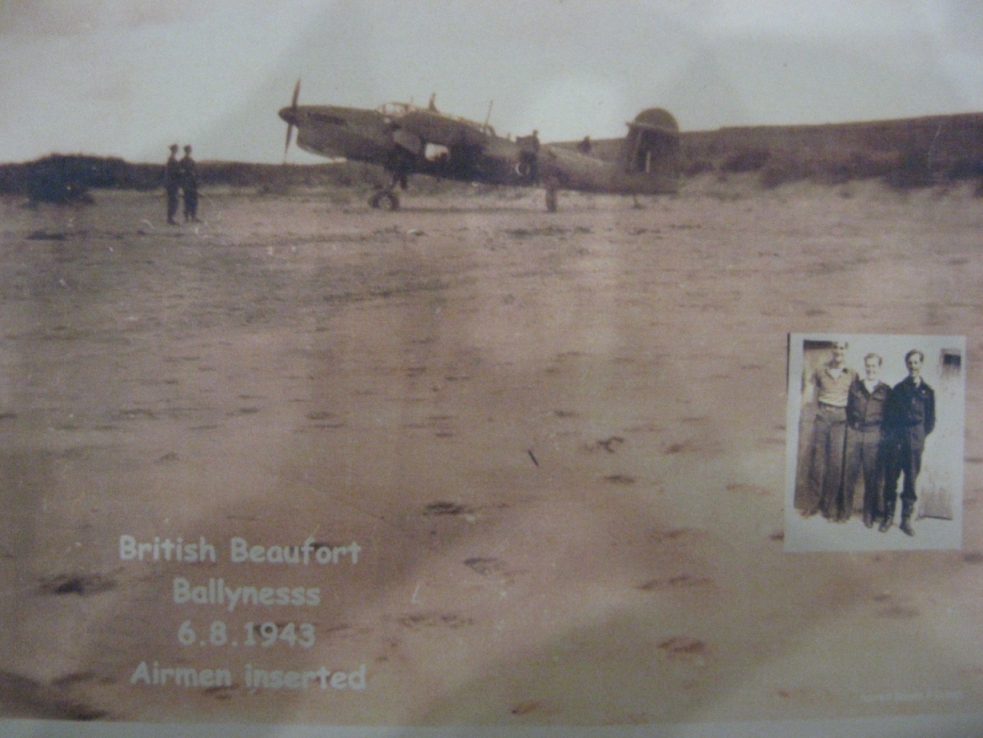
Photos from Ballyness during those few short days were taken by one of Frank Matthew's daughters, he being the then owner of Matthews Hotel in Falcaragh. She also took this image of the aircraft
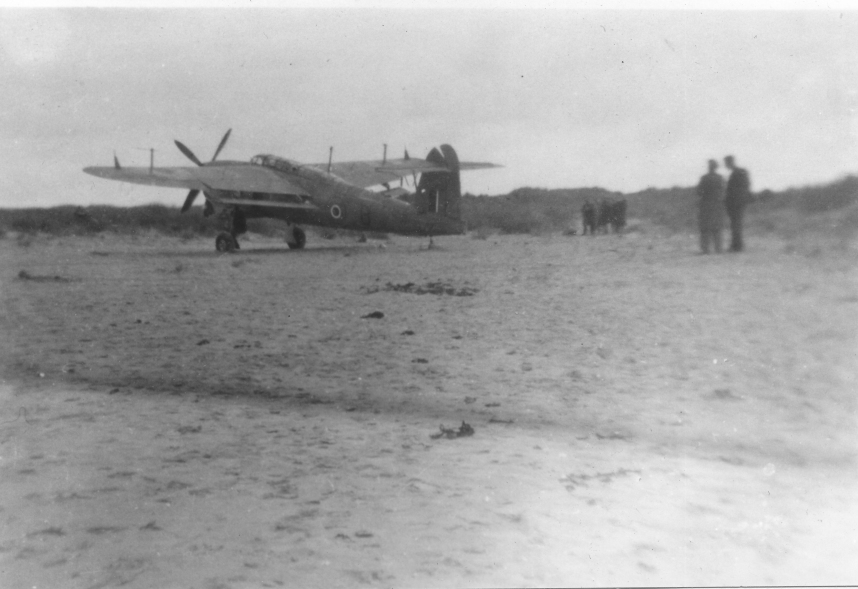
A third image has also been identified as shown below.
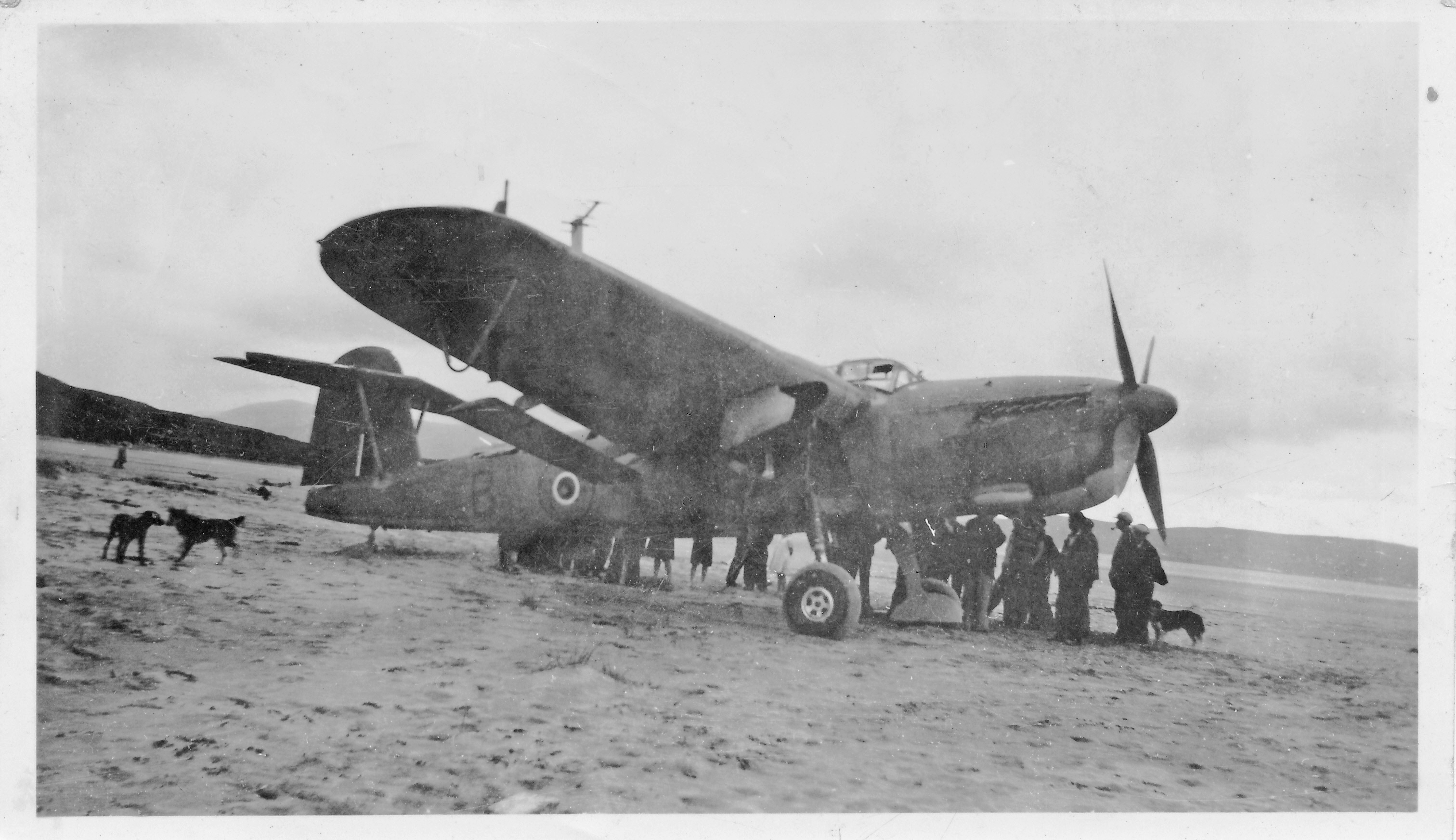
While the events at Falcarragh ended well with the crew and aircraft able to depart, by the end of 1944 two of the young airmen would be dead, killed in tragic training accidents in the skies over Scotland.
The crew told the authorities they were flying from an aircraft carrier and had become lost. As it turns out the squadron logs for 810 Squadron at that time flying from HMS Illustrious survive in the UK national archives and they confirmed where the aircraft was flying from. The names of the crew are provided below and are confirmed from searches of the Navy Lists and family history sources as well as contacts with the mens families where possible.
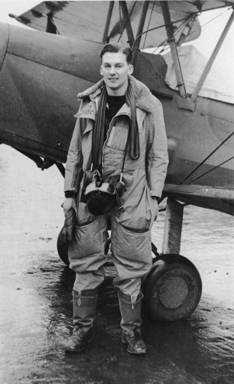 |
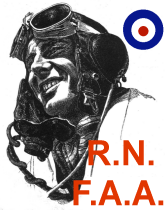 Seeking photo of S/Lt Harry 'Spike' Williams |
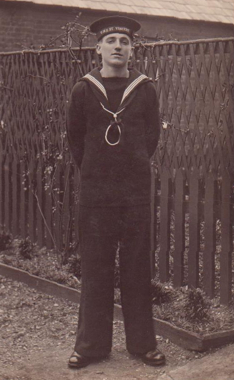 |
| S/Lt (A) James Graham IRVINE, Pilot | S/Lt (A) Harry WILLIAMS, Observer (Navigator) | LA Walter Edward MURRAY, Telegraphist/Air Gunner (TAG) |
The aircraft, Fairey Barracuda, serial number DP862, was one of a batch of 300 Barracuda's built under contract by Boulton Paul in Wolverhampton. It was a TBR II variant, fitted with the Merlin engine. 810 Squadron had received their aircraft in April 1943 in Scotland and worked up on them during that spring and summer. In late July 1943, they sailed on the Illustrious to the Norwegian coast to partake in Operation Governor, an attempt to lure the German heavy warships out to battle and as a diversion to the ongoing battles in Sicily. The Germans did not take the bait and the carrier was assigned to anti submarine patrols with escort carrier HMS Unicorn. DP862 continued on in service with 810 Squadron until December 1943, when on the 1st it crashed on a night landing on HMS Illustrious. It then passed on to 785 Squadron at Crail after repair. Later in 1945, it again met with a mishap after a brake failure while taxying. It collided with a hangar door. The last recorded location by historian Ray Sturtivant was at Ballyhalbert in Northern Ireland on 26 Sep 1945.
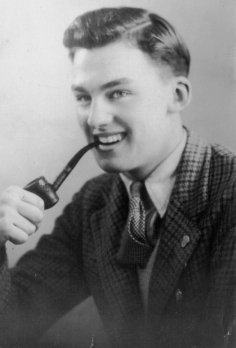 James
Graham Irvine, the son of James Daniel and Dorothy Irvine,
from St Margarets on Thames in Middlesex was born in 1921, one
of three siblings. He was commonly called Graham by the family.
Graham's nephew, who was named after him, was kind enough to
provide photos and information about him. In family terms,
Graham's death in 1944 had ramifications which have continued
down the years. When his parents died, they each in turn had
their ashes placed on his grave at Arbroath. When his sister
died, her ashes were placed there too, to "be with" her bother
and parents. And then when her husband died, his ashes were
placed there too, to be with his wife's.
James
Graham Irvine, the son of James Daniel and Dorothy Irvine,
from St Margarets on Thames in Middlesex was born in 1921, one
of three siblings. He was commonly called Graham by the family.
Graham's nephew, who was named after him, was kind enough to
provide photos and information about him. In family terms,
Graham's death in 1944 had ramifications which have continued
down the years. When his parents died, they each in turn had
their ashes placed on his grave at Arbroath. When his sister
died, her ashes were placed there too, to "be with" her bother
and parents. And then when her husband died, his ashes were
placed there too, to be with his wife's.
Graham was commishioned as an officer in 1941 and was assigned
to 810 Squadron in February 1943. Prior to this, the Navy List
shows him with 829 Squadron in October 1942 also on the
Illustrious. It is likely that he served in the Indian Ocean
during the Madagascar campaign in the Autumn of 1942. 829
Squadron was amalgatmeted with 810 Squadron in South Africa in
October 1942. He was not the first aviator in his family, his
father before him had been a pilot in the First World War, an
early member of the new Royal Air Force.
Graham Irvine flew on in the Fleet Air Arm until tragedy caught
up with him on 7th September 1944. That day, the then
Lieutenant, was flying a training mission with 769 Squadron from
HMS Peewit, the naval air station at Easthaven, in Angus,
Scotland. Flying Barracuda P9969, the starboard wing dropped
during the landing phase causing the aircraft to crash. Some
sources quote two other airmen on board as being killed but this
seems to be incorrect. A Sgt C Tweddle of the RAF and a LA S
Powell are quoted as being on board. They are not listed on the
CWGC so its expected they were only injured.
Walter Murray was born to Annie and Edward J Murray in
Hawick, Scotland in 1923. He had two brothers also serving in
the naval forces during the war. He died on November 17, 1943
when the Barracuda of 810 Squadron he was flying in collided
with another squadron aircraft. Murray's aircraft BV805 and the
other, BV799, were both lost with a total of six airmen killed.
The crash occured near Ailsa Craig, in the Clyde Estuary. They
were flying a training mission from HMS Landrail, the naval air
station at Campbletown in Scotland. Walter's remains were never
recovered and he is remembered on the Portsmouth Naval Memorial.
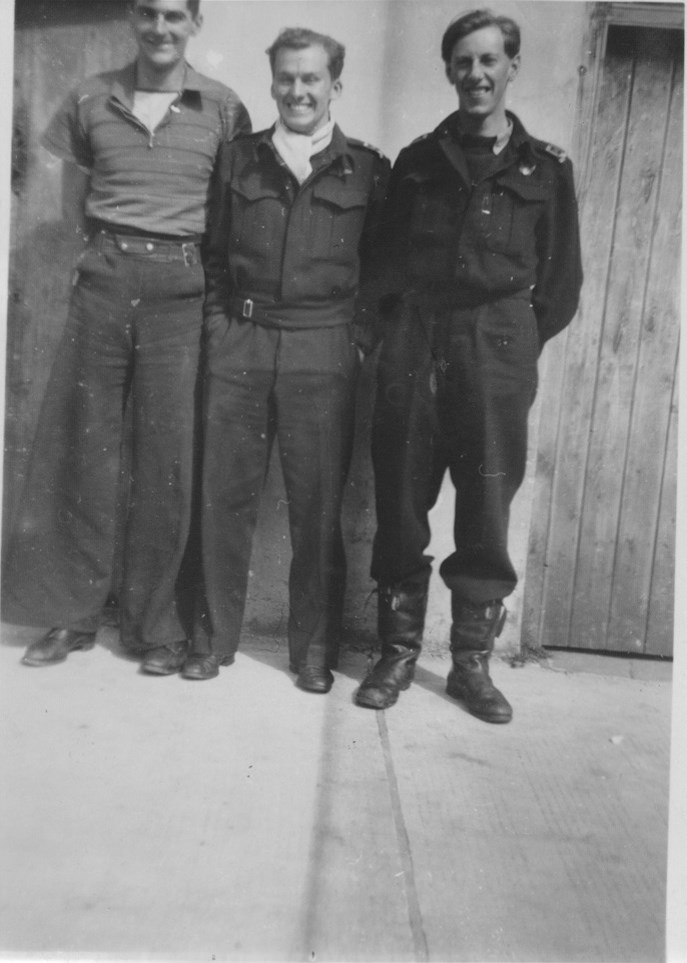 The third
member of the crew is not as yet fully identified. His name is
recorded as Sub/Lt 'J H Williams' by the Irish Army. The Royal
Navy List of Ocotber 1942 shows him serving in 829 Squadron
alongside S/Lt Irvine while in July 1943 lists both officers had
joined 810 Squadron, Temporary Sub/Lt's J G Irvine (Pilot) and
H. Williams, Observer. The latter is listed with a date of
assignment to the Squadron of 26 June 1943. The only H Williams
that seems to appear in the Navy Lists in relation to the Fleet
Air Arm is a Harry Williams with the trade of Observer. By
February 1944 it appears he was stationed at the HMS Daedulus
Naval Air Station. Other information received indicates that
Williams was with 810 Squadron during 1942 and was known as
'Spike' during his service. It is thought that he is the man on
right of the photo to the left which is in the Falcarragh
Visitors Center. The photo was taken it seems by a Miss Matthews
from the locallity, the daughter of the hotel owner where the
crew were accomodated.
The third
member of the crew is not as yet fully identified. His name is
recorded as Sub/Lt 'J H Williams' by the Irish Army. The Royal
Navy List of Ocotber 1942 shows him serving in 829 Squadron
alongside S/Lt Irvine while in July 1943 lists both officers had
joined 810 Squadron, Temporary Sub/Lt's J G Irvine (Pilot) and
H. Williams, Observer. The latter is listed with a date of
assignment to the Squadron of 26 June 1943. The only H Williams
that seems to appear in the Navy Lists in relation to the Fleet
Air Arm is a Harry Williams with the trade of Observer. By
February 1944 it appears he was stationed at the HMS Daedulus
Naval Air Station. Other information received indicates that
Williams was with 810 Squadron during 1942 and was known as
'Spike' during his service. It is thought that he is the man on
right of the photo to the left which is in the Falcarragh
Visitors Center. The photo was taken it seems by a Miss Matthews
from the locallity, the daughter of the hotel owner where the
crew were accomodated.
The story locally was that the crew were kept under loose
"house arrest" in the hotel cum post office in Main St.
Falcarragh, then owned by the Matthews family. An Officer came
from the Irish army base at Rockhill to keep an eye on them and
come Sunday, he marched them down to the Chapel to Mass whether
they wanted to or not as his orders were not to leave the
company of the Pilot. Being a handsome fellow all the local
ladies fancied the pilot and his presence caused a flutter!
He was not allowed to contact his home but Mrs Matthews
contacted his mother to assure her he was OK. It was her
daughter who took the photo and gave them to the local
historians in Falcarragh.
It is obvious the pilot was the main attraction. It didn't
matter that the crewman on the left got half his head left out
of the photo!
Compiled by Dennis Burke, 2016, Dublin and Sligo. With thanks too the Graham family and J Clare. Also to Martin Gleeson and the Falcarragh Visitors Center. Thanks also to Seosamh O'Ceallaigh and John Connaghan, local historians.
